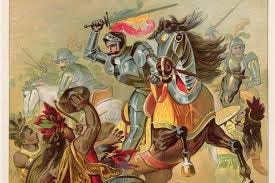The Spanish and Portuguese conquest of the Americas, 16th century
The origins of the modernization of Northwestern Europe
In my last commentary, I put forth the phrase “the dialectic of domination and development” to refer to the historic tendency for economic and cultural development to be based on a foundation of conquest and exploitation. This tendency is well illustrated by the sixteenth century modernization of agriculture and expansion of craft industry in Northwestern Europe, dynamics that were made possible by the Spanish and Portuguese conquest of the peoples and empires of the region today known as Latin America. As a manifestation of the “colonial denial” (see “We must overcome the colonial denial: Wallerstein versus the woke,” May 14, 2021), modern Western scholarship has tended to explain the transformations of Northwestern Europe as due to technological innovations and cultural changes. But from a world-systems perspective, emerging international relations become visible, enabling us to see the role of the Spanish conquest of America as a fundamental causal factor in the transformat…


